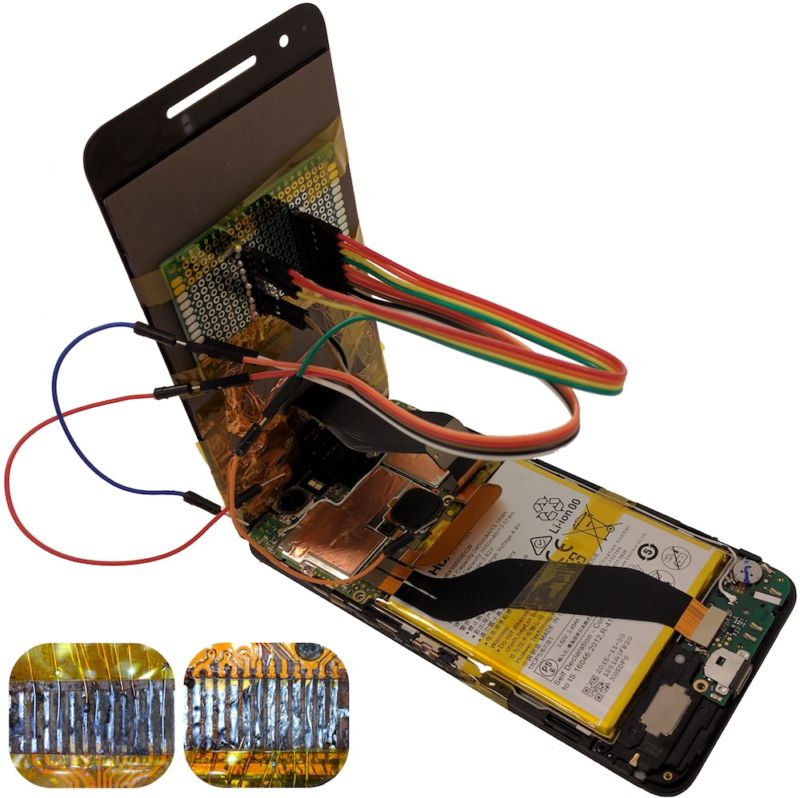
Enlarge (credit: Omer Shwartz et al.)
People with cracked touch screens or similar smartphone maladies have a new headache to consider: the possibility the replacement parts installed by repair shops contain secret hardware that completely hijacks the security of the device.
The concern arises out of research that shows how replacement screens—one put into a Huawei Nexus 6P and the other into an LG G Pad 7.0—can be used to surreptitiously log keyboard input and patterns, install malicious apps, and take pictures and e-mail them to the attacker. The booby-trapped screens also exploited operating system vulnerabilities that bypassed key security protections built into the phones. The malicious parts cost less than $10 and could easily be mass produced. Most chilling of all, to most people, the booby-trapped parts could be indistinguishable from legitimate ones, a trait that could leave many service technicians unaware of the maliciousness. There would be no sign of tampering unless someone with a background in hardware disassembled the repaired phone and inspected it.
The research, presented in a paper presented this week at the 2017 Usenix Workshop on Offensive Technologies, highlights an often overlooked disparity in smartphone security. The software drivers included in both the iOS and Android operating systems are closely guarded by the device manufacturers, and therefore exist within a "trust boundary." The factory-installed hardware that communicates with the drivers is similarly assumed to be trustworthy, as long as the manufacturer safeguards its supply chain. The security model breaks down as soon as a phone is serviced in a third-party repair shop, where there's no reliable way to certify replacement parts haven't been modified.